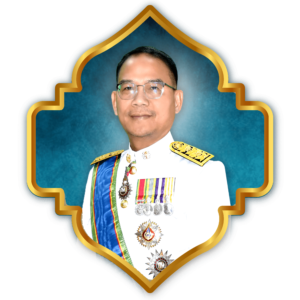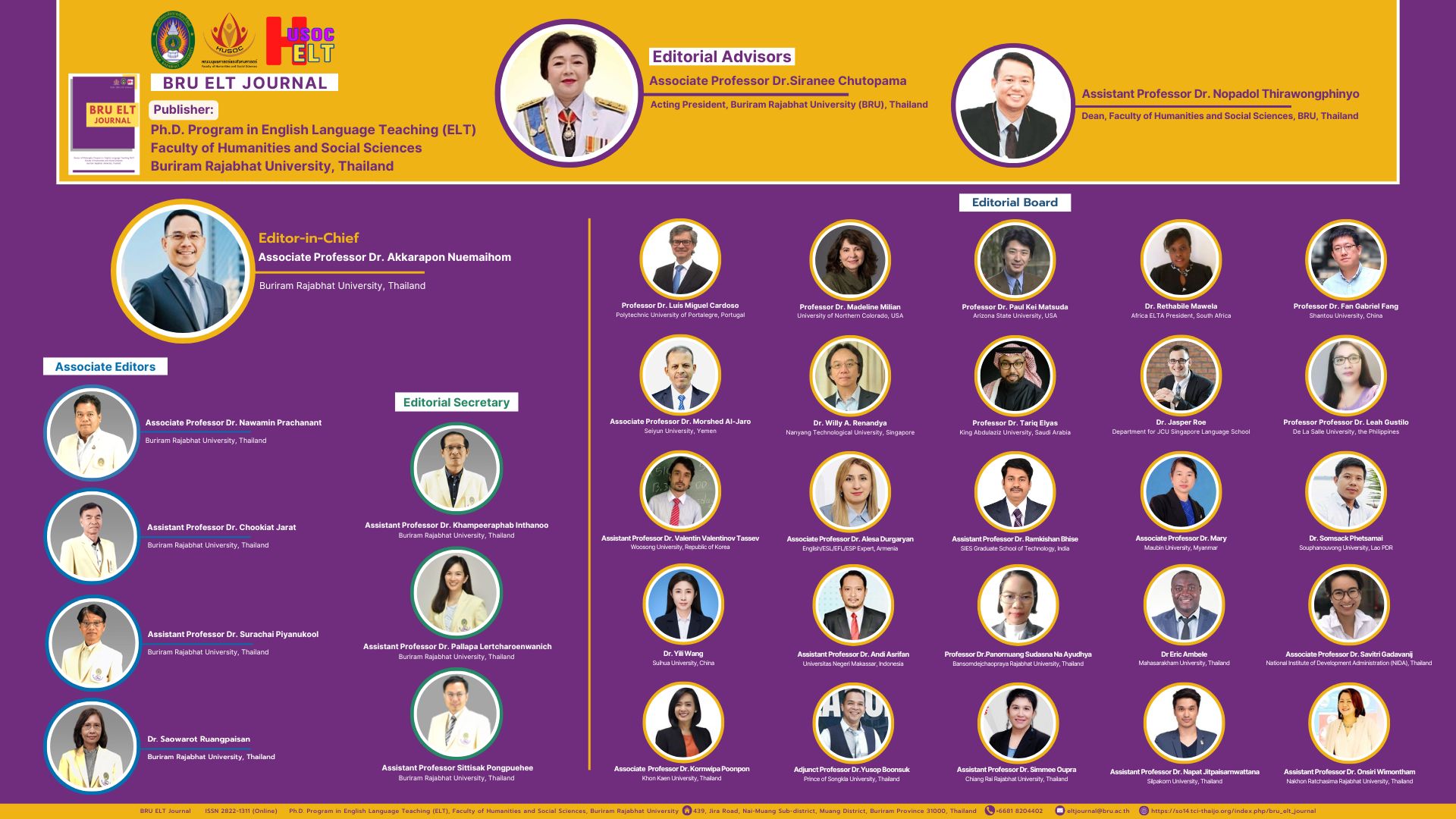Translation and Direct Writing Methods on the Compositions of Grade 9 Students in the Northern Philippines
DOI:
https://doi.org/10.14456/bej.2023.13Keywords:
Filipino language, Ilokano language, writing skills, components of writing, Kto12Abstract
This research aimed to analyze the composition writing skills of Grade 9 students in the Northern Philippines using translation and direct writing methods through the quasi-experimental research design. The questionnaire and four compositions were instruments of the study. Rubric, mean, Pearson product-moment correlation, and t-test were the statistical tools employed. Results show that the respondents performed better using the translation method than direct writing in the narrative, expository, descriptive, and argumentative compositions. The content, organization, and mechanics of those who translated their compositions from their mother tongue (Ilokano) to their second language (Filipino) were found more proficient than those who used direct writing. More so, they are proficient in descriptive compositions. Sex, educational resources, and leisure activities have significant relationships with the respondents who translated. Furthermore, a significant difference was found between the respondents who directly wrote and those who translated. Those who translated have compositions that are more substantial and more organized to generate ideas than those who used direct writing. Based on the results, it is recommended to use the first language to generate and conceptualize ideas and after which, translate it to the second language. Students should be trained more on Ilokano language use.
References
Adeyemi, D.A. (2008). The gender factor in composition writing with the use of the cooperative and individualized approaches at a junior secondary school in Botswana. Journal of Education Enquiry, 8(1). http://www.literacy.unisa. edu.au
Arrogante, J. A. (2007). Retorika masining na pagpapahayag. National Book Store.
Arrogante, J.A. at Garcia, L. (2004). Kakayahang Pilipino sa komunikasyong Filipino (Fil 101). National Book Store.
Attiyat, N. M. A. (2019). The impact of pleasure reading on enhancing writing achievement and reading comprehension. Arab World English Journal, 10(1). https://dx.doi.org/10.24093/awej/vol10no1.14
Beiler, I. R., & Dewilde, A. J. (2020). Translation as translingual writing practice in English as an additional language. The Modern Language Journal, 104(3). https://doi:10.1111/modl.12660.
Bernales, R. A., Garcia, L. C., Absesamis, N. R., Villanueva, J. M., Cabrera, H. I. J., Jara, R. G, & Ornos, P. S. (2002). Komunikasyon sa makabagong panahon. Mutya Publishing House.
Clayton, J. (2022). Leisure activities overview and examples. https://study.com/learn/lesson/leisure-activities-overview-examples-what-are-leisure-activities. html?fbclid=IwAR2VwqOdUAQOCq26RZ23SH1yAk1MSU99jLxFqaSwaN1C5FSxuWOI-ceBUQY
Cummins, J. (2000). Language, power and pedagogy: Bilingual children in the crossfire. Clevedon: Multilingual Matters.
Defazio, J., Jones, J., Tennant, F., & Hook, S. A. (2010). Academic literacy: The importance and impact of writing across the curriculum – a case study. Journal of the Scholarship of Teaching and Learning, 10(2), 34-47. https://files.eric.ed.gov/fulltext/EJ890711.pdf.
Department of Education (2016). K to 12 curriculum guide Filipino. 2012 Department of Education Curriculum Guide. https://www.deped.gov.ph/wp-content/uploads/2019/01/Filipino-CG.pdf
Devi, R. (n.d.) The importance and impact of recreational activities in the educational curriculum. https://theknowledgereview.com/the-importance-and-impact-of-recreational-activities-in-the-educational-curriculum/
Du, H., & List, A. (2020). Researching and writing based on multiple texts. Learning and Instruction, 66(July 2018), 101297. https://doi.org/10.1016/j.learninstruc. 2019.101297
Genç-Ersoy, B., & Göl-Dede, D. (2022). Developing writing skills, writing attitudes and motivation through educational games: Action research. International Journal of Contemporary Educational Research, 9(3), 569-589. https://doi.org/10.33200/ijcer.1089781
Gandeza, C. C., & Unciano, M.J.R. (2022). Personal narratives: A pedagogical intervention in writing. Asia Pacific Journal of Advanced Education and Technology, 1(1), 56-63. https://ssrn.com/abstract=4078130.
Gentry, J. R. (2017). Why our students can’t write? https://www.psychologytoday.com/us/blog/raising-readers-writers-and-spellers/ 201708/why-our-students-can-t-write?fbclid=IwAR3C9gH2lrt_7ed3P4QKzRqpwG_alEFBh-_WxUB6Rj_YLs1 RhRYRbGAkJzo.
Habibi, H., Salleh, A.H., & Singh, M. K. S. (2015). The effect of reading on improving the writing of EFL students. Pertanika J Soc. Sci. & Hum, 23(4). https://www.researchgate.net/publication/285219262_The_effect_of_reading_on_improving_the_writing_of_EFL_students
Hasby, M.A., & Sugianto, S. (2022). Enhancing students writing skills through English movies -watching reports: An improvement of linguistic competences: Writing skills English movies. Journal of Language and Literature Studies, 1(2), 66-74. DOI:10.36312/jolls.v1i2.628
Horner, B., & Tetreault, L. (2016). Translation as (global) writing. Composition Studies, 44-13-30. https://ir.library.louisville.edu/cgi/viewcontent.cgi?article=1458&context=faculty
Hurley, J.L. (2000). The foundations of dual language instruction. United States: Addison Wesley Longman Inc.
Indrasari, A., Novita, D., & Megawati, F. (2018). Big book: Attractive media for teaching vocabulary to lower class of young learners. JEES (Journal of English Educators Society), 3(2), 141. https://doi.org/10.21070/jees.v3i2.1572
Ismail, S.A.A., & Alsheikh, N. O. (2012). Second language learners’ performance and strategies when writing direct and translated essays. International Education Studies, 5(5), 173-184.
Jocson, M. O., Villafuerte, P. V., & Alcaraz, C. V. (2005).Filipino 2 pagbasa at pagsulat tungo sa pananaliksik. Lorimar Publishing Company Inc.
Kamari, E., Gorjian, B., & Pazhakh A. (2012). Examining the effects of gender on second language writing proficiency of Iranian EFL students descriptive vs. opinion one paragraph essay. Advances in Asian Social Sciences, 3(4), 2012. ISSN2117-6429 World Science Publisher, United States. www.worldscience.org
Karim, K., & Nassaji, H. (2013). First language transfer in second language writing: An examination of current research. Iranian Journal of Second Language Teaching Research, 117-134. http://www.urmia.ac.ir/sites/www.urmia.ac.ir/files/ Article%207_1.pdf
Kazemian, M., Irawan, L. A., & Haerazi, H. (2021). Developing metacognitive writing strategy to enhance writing skills viewed from prospective teachers’ critical thinking skills. Journal of Language and Literature Studies, 1(1), 15–28. https://doi.org/https://doi.org/10.36312/ejolls.v1i1.499
Kobayashi, H. & Rinnert, C. (2008). Task response and text construction across L1 and L2 writing. Journal of Second Language Writing. http://sla.sjtu.edu.cn
Krashen, S. D. (1987). Principles and practice in second language acquisition. Prentice Hall International. www.sk.com.br/sk-krash-english.html.
Laila, A., Budiningsi, A., & Syamsi, K. (2021). Textbook based on local wisdom to improve reading and writing skills of elementary students. International Journal of Evaluation and Research in Education (IJERE), 10(3), 886-892. DOI: 10.11591/ijere.v10i3.21683
Lifang, Z. (2008). Comparisson of two writing processes: direct versus translated composition. Canadian Academy of Oriental and Occidental Culture. http://isg.urv.es/publicity/isg/projects/2012 _DGT/documents/lifang.pdf.
Mareque, M., Creo, E. P., & Sanchez, M.B.G. (2019). Fostering creativity and communicative soft skills through leisure activities in management studies. Education + Training, 61(1), 94-107. https://doi.org/10.1108/ET-07-2018-0149.
Mendoza, Z., & Romero, M. (2007). Pagbasa at pagsulat sa iba’t ibang disiplina sa antas tersarya. Quezon City: Rex Book Store, Inc.
Mohamed, K., & Ayeche, Z. (2011). The impact of the internet in the development of student’s writing. Revue des Sciences Humaines – Université Mohamed Khider- Biskra No: 21. http://archives.univ-biskra.dz/bitstream/123456789/288/1/28.pdf
Murtisari, E. (2016). Translation as a skill in language learning/teaching: EFL learner’s perceptions. Studies about Languages, 29, 102-113. https://doi.org/10.5755/j01.sal.0.29. 14580.
Prieto, N. G., Naval, V. C., & Carey, T. G. (2017). Practical research 1 qualiative. Lorimar Publishing, Inc.
Rachman, D., Nur, D.R., & Arbain (2020). Internet usage and its impact on the academic writing performance of EFL student at tertiary level. https://eudl.eu/pdf/10.4108/eai.16-10-2019.163226
Republic Act 10157. (2012) Kindergarten Education Act. https://www.officialgazette.gov.ph/2012/01/20/republic-act-no-10157/
Republic Act 10533. (2013). Enhanced basic education act of 2013. https://www.officialgazette.gov.ph/2013/05/15/republic-act-no-10533/
Rogers, J., & Revesz, A. (2020). Experimental and quasi experimental designs. In: MCkinley, J. and Rose. H. (eds) Research Methods in Applied Linguistics. Routledge: London UK.
Smith, M.C. (2010). The benefits of writing. https://www.niu.edu/language-literacy/_pdf/the-benefits-of-writing.pdf
Stapa S.H., & Majid, A.H.A. (2012). The use of first language in developing ideas in second language writing. American Journal of Social Issues and Humanities. http://www.ajsi.org.
Tavakoli, M., Ghadiri, M., & Zabihi, R. (2014). Direct versus translated writing: The effect of translation on learners’ second language writing ability. GEMA Online Journal of Language Studies, 14(2), 61-74.
Thadani, N. (2022). The benefits of recreational reading. https://www.gmu.edu/news/2022-03/benefits-recreational-reading.
Torrijos, M.M.R. (2009). Effects of cross-linguistic influences on second language acquisition: a corpus-based study of semantic transfer in written production. dialnetunirioja.es/descarga/articulo2993230.pdf.
Tumangan, A. P. (1997). Sining ng pakikipagtalastasan. Grandwater Publications.
Ulit, P.G. (2009). Komunikasyon sa akademikong Filipino (Filipino 1). Grandwater Publishing, Inc.
Unciano, M.J.R. (2020). Kto12 training program in the university of northern Philippines. Psychology and Educational Journal, 58(2). https://doi.org/10.17762/pae.v58i2.2800.
Van Weijen, D. et al. (2009). L1 use during L2 writing: An empirical study of a complex phenomenon. Journal of Second Language Writing. http:www.sciencedirectcom/science/ article/pii/S1060374309000 344
Walsh, K. (2010). The importance of writing skills: Online tools to encourage success.Retrieved December 27, 2012, from http://www.emergingedtech.
Walter, S. L., & Dekker, D.E. (2008). Mother tongue instruction in Lubuagan: A case study from the Philippines. http://eric.ed.gov/?id=EJ954611.
Wang, W., & Wen, Q. (2002). L1 use in L2 composing process: An exploratory study of 16 Chinese EFL writers. Journal of Second Language Writing, 225-246. www.sciencedirect.com /science/article /pii/ S106037430200084X.
Weatherall, A. (2002). Gender, language, and discourse. Routledge, Inc., USA. www.fibunair.ac.id.
Yerlisu, L.T., Ardahan, F., & Yıldız, F. (2010). Profiles of individuals participating in cycling activities, reasons for doing this sport and the benefits they obtain. 11. International Sport Sciences Congress, Antalya.






